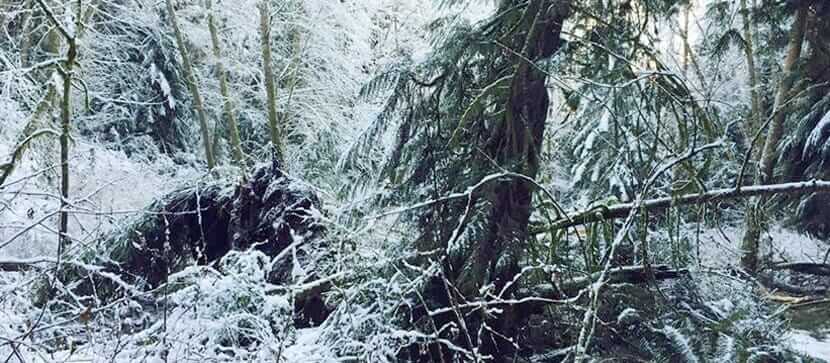What is a fresh snow to a young cedar?
On the morning after the recent snowfall, I entered the Farm Loop trail along the wetland and discovered that one of the largest red alders with three girthy trunks had come down, heaving up its root mass and taking several other trees with it. Looking to where the hulking alder had stood, I did not find an absence, but rather a small flock of Western red cedars whose full drooping green now made direct contact with the sky.
I felt present to a sort of rite of passage. With the canopy opened, the young cedars are now poised to strike skyward toward that mythic possibility of an old growth future. Their relationship with the world is changed fundamentally. We are witness to these moments in a process that will unfold over many generations in this conservation forest.
The alders which rose up in the wetland after a history of cutting and burning play a substantial role in revitalizing the habitat and soils by hosting nitrogen fixing bacteria, encouraging the growth of the communicative mycorrhizal fungi, providing habitat for countless creatures, and more. These small cedars rose up comfortably in the shadow of their canopy. Now, through their decomposition, the alders’ fallen bodies will usher in a whole new pulse of life processes as they become food and habitat and are transformed into the air, soil, and myriad plants, fungi, and creatures.
Day by day, season by season, the wetland area of our forest with its waning stand of mature alders transitions to a new phase of life where cedars preside in the canopy.
—Robert Mellinger

